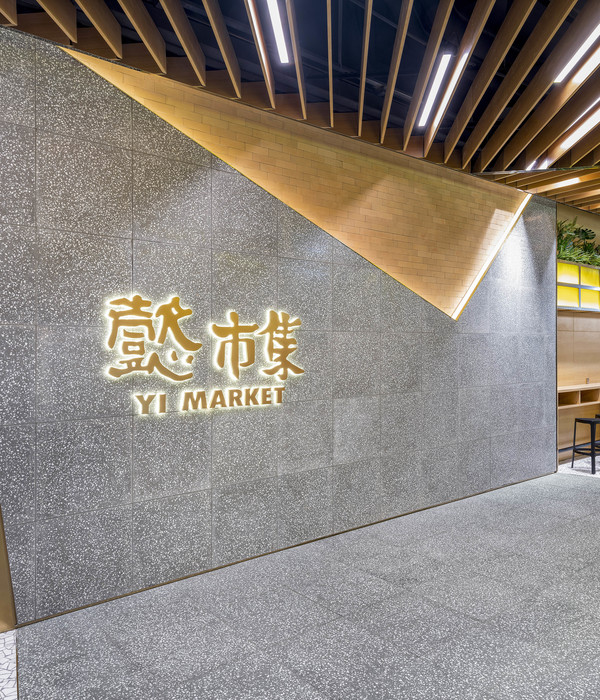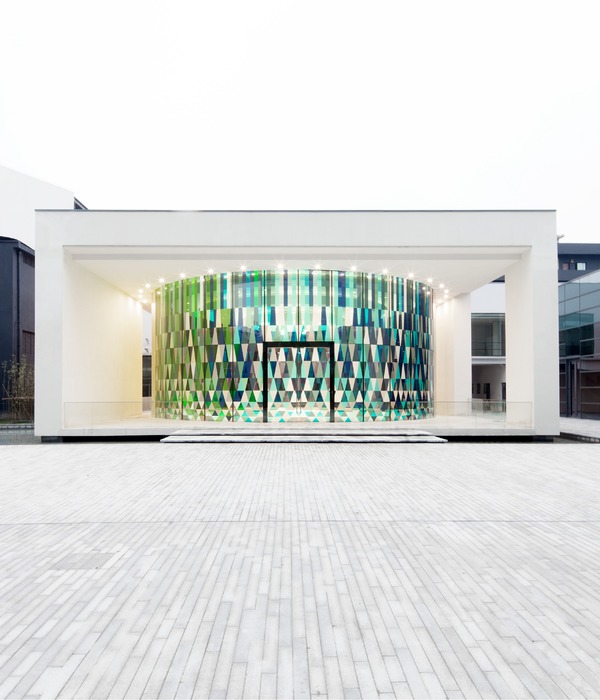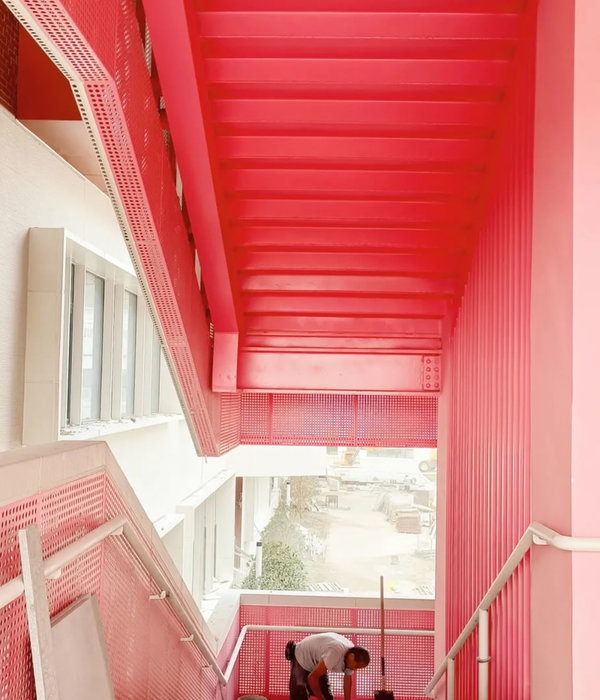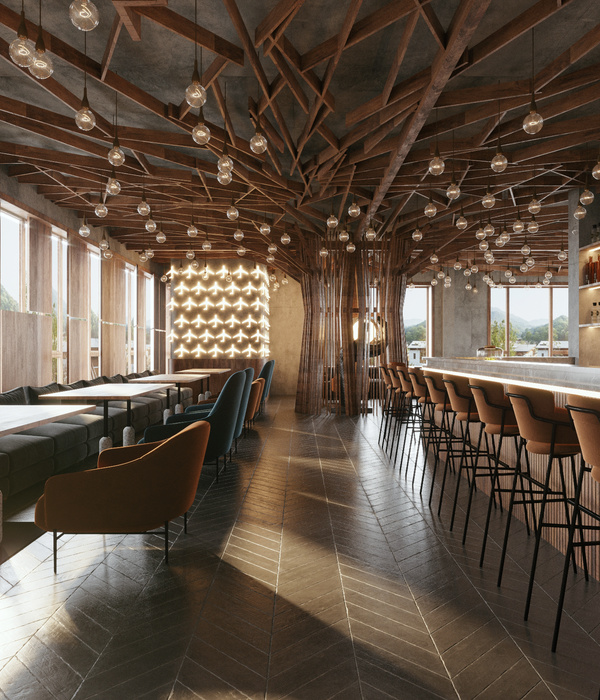- 项目名称:巴西 Pouso Alegre 市 OTB 汉堡店的“云厨房”设计
- 设计方:Miguel Croce
- 项目面积:377 平方英尺
- 项目地点:巴西 Pouso Alegre 市
- 设计时间:2021 年
- 完工时间:2021 年
- 主要材料:金属,玻璃
- 项目业主:OTB
Architects:Miguel Croce
Area :377 ft²
Year :2021
Photographs :Manuela Lourenço
Lead Architect :Miguel Croce
Client : OTB
City : Pouso Alegre
Country : Brazil
Pouso Alegre is a city in the south of Minas Gerais that has grown rapidly in recent decades, becoming the center of its micro-region. In its urban fabric, two cultural moments coexist in contrast: a historic city with its quiet pace of the countryside with narrow streets, as a memory, and the contemporary growth with new shops, shopping centers and buildings, which points to the desire for an urban future.
OTB [O Tardo Burguer, “the so-called burger", a pun in a local accent] is a delivery brand created during the pandemic. Initially, in a temporary location, the distance to the most served neighborhoods soon arose as a problem. Therefore, the first reason for the project was mainly geographical: it needed to be downtown. Even more, in the uncertain situation of the pandemic, there was an unusual offer of properties available, and one of the most traditional places in the city, the “Bar Pé de Porco” was an option.
The pandemic also shaped the program, as it was not necessary to create a dining “hall”, and so the agglomeration of people wasn't recommended. Just a counter and a kitchen would suffice, but the location, due to its history and centrality, demanded nobler urban aspirations and was therefore a chance to spatially state a new hypothesis of commercial typology.
The question that was posed as a project was: how to install a “cloud kitchen” in the historic center without it becoming a mere dark and suspicious counter? In other words: What is the possible image of a contemporary enterprise within a traditional setting?
The kitchen occupies approximately 30m² and is in front of a small square that houses a large tree where 5 streets meet, forming an urban intertwining. Intensely moved by both pedestrians and cars, its 8m façade works as great urban support for visibility.
The division of spaces is simple, half is occupied by the kitchen and half by the administration, stock, and support. These spaces, usually hidden in the back of the restaurants, underwent an inversion and were laid out on the street. The facade constitutes not only a representation of the brand but put the operation itself as a representation of the brand. That is, not offering a representation of oneself, but presenting oneself. Hidden programs are revealed as the reality of the city.
In the kitchen, a metallic system was designed to be both a closing device and protection from the sun and rain. Behind it, the glass reveals and protects the interior while allowing customers to follow the food preparation from the sidewalk. The interior cladding appears outside, while the exhaust hood instead of disappearing through the back, break through the street and climbs the building to the roof.
On the other side, the balcony is an independent structure, a cabin, and a volume that organizes the space flow. From there, it is possible to observe both the street and the kitchen, making communication quick. Its curved walls have the dual function of expanding the service area and reaffirming its presence as an object.
▼项目更多图片
{{item.text_origin}}












